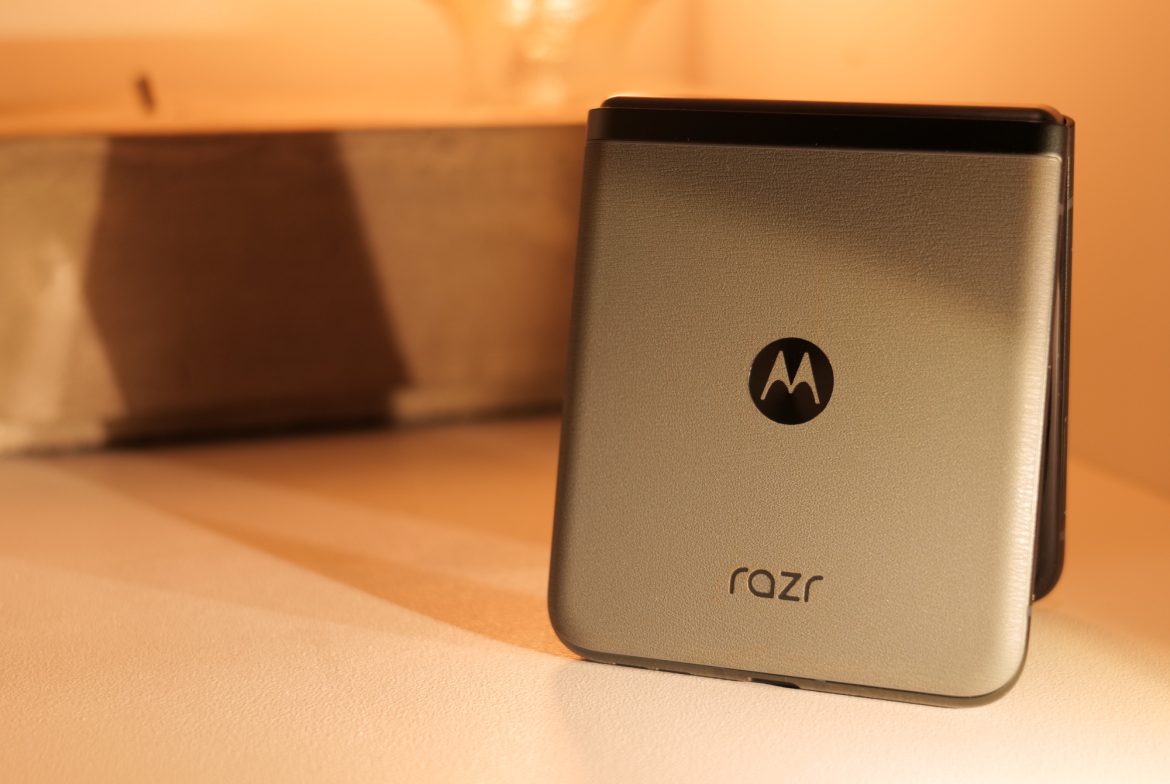TL;DR
The Motorola Razr40 revives the iconic foldable design with a user-centric approach, offering a surprisingly robust build and a satisfyingly analog feel. It boasts a bright 144Hz main display, handy gesture controls, and an ingenious camera feature for capturing kids' attention. While the smaller outer screen is functional, the phone's processor can sometimes lag, and the camera, though capable of great shots in good conditions, can be slow and prone to over-processing. Battery life is solid, and it even includes a charger. Despite not perfectly replicating the original Razr's flip action, it presents a compelling package that balances nostalgia with modern features and a competitive price point. Discover if this latest Razr is the one for you in our full review!
Many will recall the original Motorola Razr V3, which made a significant impact on the mobile market in 2004. While subsequent models were released, none quite replicated the original’s distinctive design and confident appeal. The Motorola Droid Razr in 2011, while part of the same family, had evolved so significantly that its connection to the original Razr concept was debatable.
After that, the trail went cold.
Motorola has since developed several technologically advanced phones, such as the Moto Z Play, featuring an innovative modular design with magnetically attachable accessories and impressive battery life. However, none achieved the iconic status of the original Motorola Razr V3. In 2020, the Motorola Razr 5G was introduced, demonstrating Motorola’s forward-thinking approach by being 5G-ready. Among the sequels, it most closely resembled the original, albeit with some similar drawbacks. Like the original, it launched with a high price point (approximately SEK 15,000 in Sweden) without offering commensurate technological advantages. Motorola subsequently reassessed its strategy and, in 2022, launched another sequel that showed improvement in terms of value for money. This year, the Motorola Razr40 has arrived, presenting a design more aligned with conventional smartphones.
We decided to examine this latest iteration in the lineage of a legendary phone. The Razr40 exhibits Motorola’s ability to integrate compelling features that can mitigate certain shortcomings. While there are aspects we would like to see improved, some elements truly stand out.
Motorola Razr40: Testing Methodology
At senses.se, our aim is to provide relatable and informative reviews that assist our readers in making informed decisions. This review focuses on a user-centric perspective rather than an in-depth analysis of the hardware specifications or performance benchmarks. Similar to our review of the Asus Zenfone 8, we evaluated the phone’s performance within a family environment, considering everyday challenges. We address questions such as camera speed, overall usability, surprising features, and potential drawbacks in daily use. Let’s proceed with our findings.
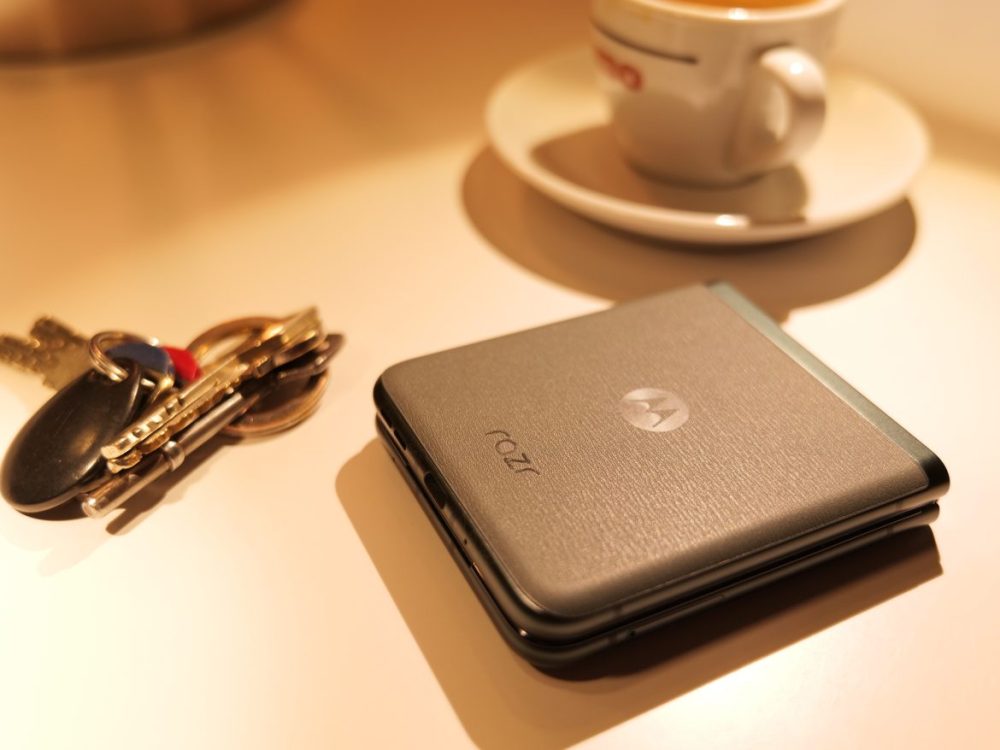
Initial Impressions of the Moto Razr40
The initial impression is reminiscent of a sleek, substantial cigarette case. The exterior is covered in vegan leather, providing excellent grip to minimize slippage. Despite this, a case and a 33W charger with cable are included. The main screen comes with a pre-applied plastic film, with the only omission being a protector for the outer screen. Despite its folding mechanism, the phone feels robust and durable.
The Impact of Foldability on the Motorola Razr40
A foldable smartphone presents a unique user experience. While it gains in length, it also requires adjustments in handling. The altered form factor necessitates adapting to new routines, as the natural grip might be affected when stored in a front pocket. However, it fits comfortably in other pockets and handbags.

Reflections on the Foldable Design
The Motorola Razr40 evokes a sense of analog interaction. Users can answer calls while wearing gloves by unfolding the phone and end calls by folding it shut. The folding action produces a satisfying click, reminiscent of older phone cradles.
Concerns have been raised about the potential for dirt to accumulate between the main screen and cause scratches when closed, or to enter the hinge mechanism. In one instance, when the phone was dropped, dirt entered the hinge, resulting in an unpleasant scraping sound upon opening. Although no visible marks were present and the sound disappeared after cleaning, this incident heightened caution. New use cases arise from the phone’s ability to stand at various angles. For example, the flashlight becomes more versatile due to its adjustable direction without requiring support. Similarly, the camera benefits from this feature for selfies and group photos. The built-in AI function allows users to signal for a picture by simply raising a hand, initiating a three-second countdown. A very convenient feature.

The User Interface and Display of the Motorola Razr40
The Main Screen
The main screen is a 6.9-inch FHD+ pOLED display with a resolution of 2,640 × 1,080 (413 ppi) and a refresh rate of up to 144 Hz. The screen provides sufficient brightness for outdoor visibility and adequate dimness for use in dark environments. A key consideration is the visibility and impact of the crease at the folding point. While it is noticeable with a light background and glare, it disappears when viewed directly from the front, regardless of ambient light levels.
Folding the phone to 90 degrees smoothly splits the screen in supported applications like camera mode or Youtube, positioning the controls on the lower half and the display on the upper half.
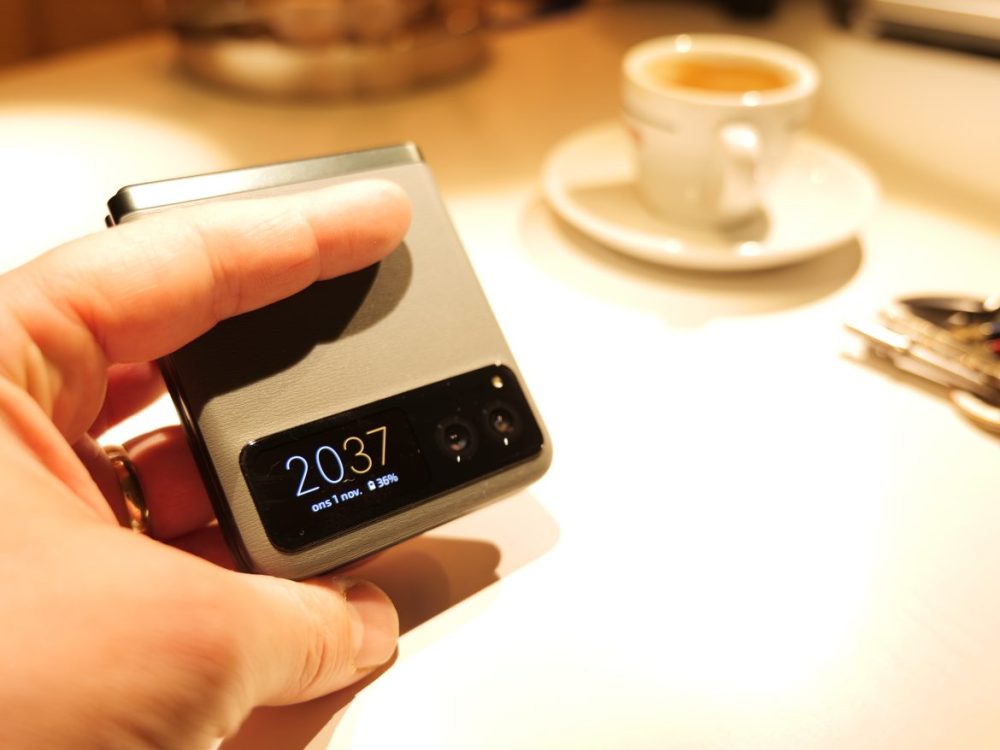
Motorola Razr40 – Outer Screen
The 1.5-inch OLED outer screen, with a resolution of 194 × 368 (282 ppi), functions similarly to a smartwatch. While it offers several functions, the selection feels somewhat limited. A notable omission is the ability to adjust the sound mode (silent, vibration, or sound) from the outer screen, which would enhance usability and reduce the need to open the phone. Nevertheless, it is convenient for quickly assessing the importance of incoming messages or notifications. Compared to the Motorola Razr40 Ultra (which we have not yet reviewed), the smaller outer screen reduces the risk of unintended interactions while in a pocket.
Motorola’s Signature Features
Motorola has long incorporated intuitive gestures not found in other devices. Shaking the phone activates the flashlight, twisting it launches the camera, and repeating the twist switches to the selfie camera. These features provide significant value, offering seamless operation even with gloves.
Motorola Unplugged
Motorola recently introduced a feature similar to iPhones’ Focus mode, but with a unique Motorola implementation. The primary objective is to reduce distractions and encourage users to disengage from their phones. Upon initial setup, Motorola Unplugged requires configuring settings such as an alternative background, allowed applications, the aggressiveness of the “do not disturb” mode, and the session duration. Users can also specify whether the mode can be overridden with or without a code or fingerprint. Once activated, the phone undergoes a transformation.
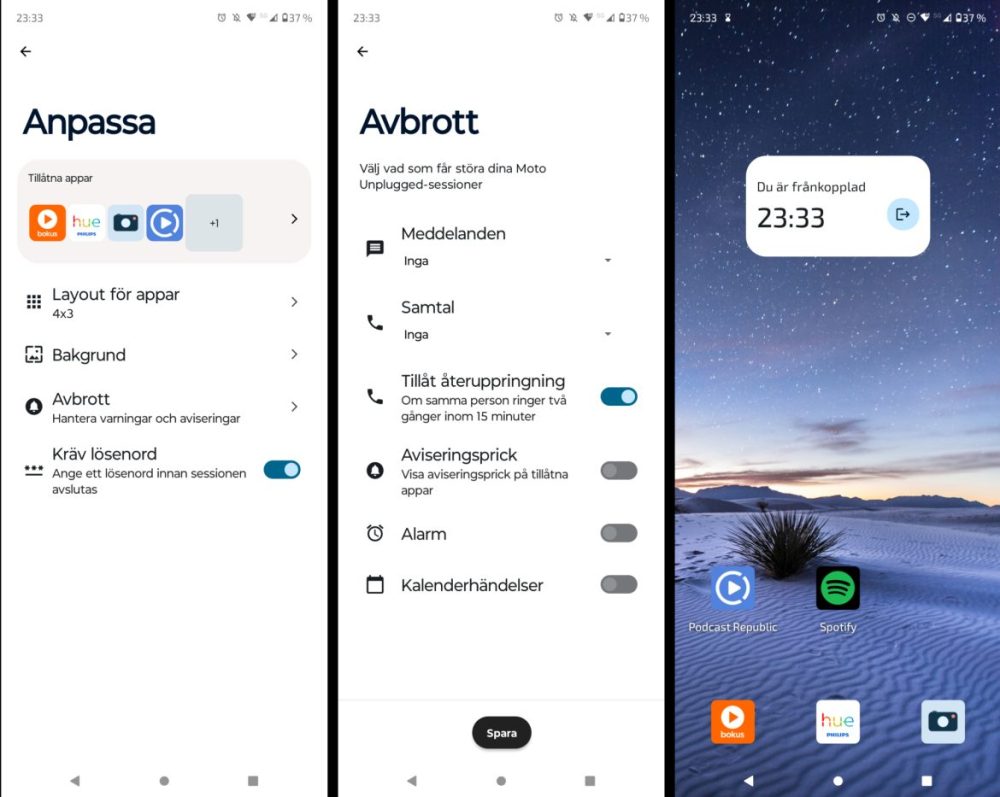
The background changes, all incoming notifications are silenced according to the configured settings, a timer starts, and the home screen is cleared, displaying only the selected applications. Side scrolling is disabled, limiting access to other features. This creates a sense of calm and visually reinforces the intention to minimize distractions. However, there’s more.
For intense concentration, the timer acts as a deadline, indicating when a break is permitted or encouraged. After the specified duration (e.g., one hour), restrictions are enforced. Motorola Unplugged requires active initiation rather than scheduling, further reinforcing the commitment to a break.
Motorola Unplugged also caters to parents. It allows them to restrict a child’s access to a single application, such as a game, with a timer, requiring a fingerprint or code to exit. This provides a sense of security and control.
Battery Performance
The phone delivers approximately 30 hours of normal use on a single charge, as advertised. This holds true with typical usage patterns without meticulous energy-saving efforts. The Motorola Razr40 is available in two variants. The primary differences are that the Motorola Razr40 Ultra features a larger outer screen (3.6-inch), a more powerful processor (Snapdragon 8+ Gen 1), but a smaller battery (3,800 mAh compared to 4,200 mAh).
The user must therefore prioritize their needs. However, in certain situations, the processor appears to struggle to keep up, resulting in occasional choppiness, longer website loading times, and a slight camera delay. While not a slow phone overall, it does not feel as consistently stable and responsive as, for example, the two-year-old Asus Zenfone 8.
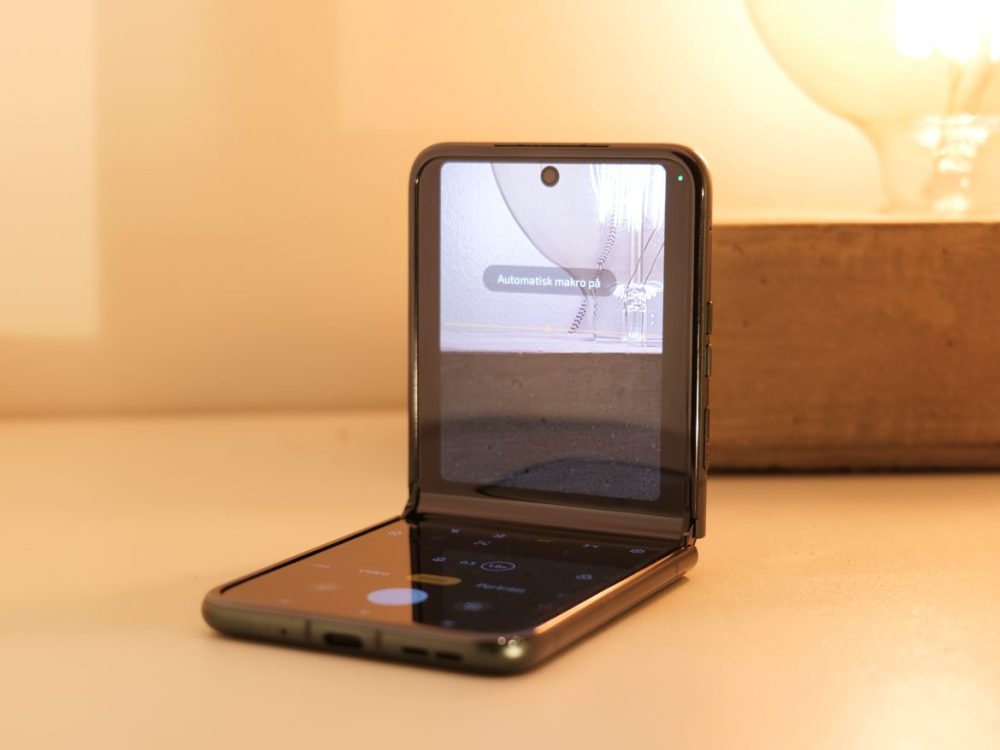
Motorola Razr40 Camera Performance
The Motorola Razr40 incorporates a truly ingenious and unique feature: a small animated face displayed next to the camera lens. This feature is particularly beneficial for capturing the attention of children and ensuring they look directly at the camera, a valuable asset for mobile photography, especially for parents. While not always desirable, it can be easily toggled on or off.

Motorola Razr40 Image Quality
The camera delivers good image quality but can be slow. While it can capture images rapidly, optimal results require decent lighting conditions. In low-light situations or when photographing moving subjects like children, blurriness can be an issue, potentially causing missed opportunities.
The camera also tends to over-process images in some cases. The post-processing is quite noticeable; the initial image displayed briefly before processing differs significantly from the final result. This is unfortunate and unnecessary.
However, when photographing relatively stationary objects or utilizing the phone’s ability to stand on its own, the results are significantly improved. The images become quite impressive, with the automatic macro mode producing vibrant images with sharp details and natural color reproduction. An ultra-res mode provides even higher resolution and larger images (64.1 MP, 6936×9248).
In summary, the camera is not ideal for quick snapshots but excels as a more deliberate tool. Given sufficient time and stable conditions, it can produce excellent results, provided it avoids excessive post-processing.
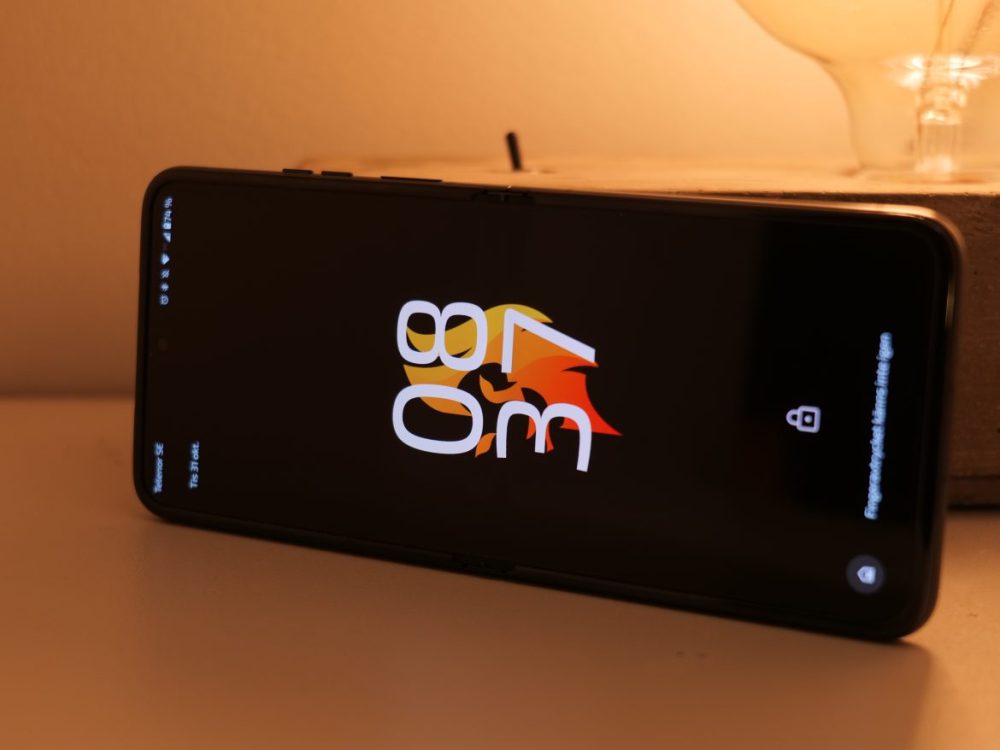
Overall Impression of the Motorola Razr40
In conclusion, the Motorola Razr40 is a compelling phone that, with its innovative features, becomes more appealing as users familiarize themselves with its operation, refine its settings, and understand its strengths and weaknesses. The key selling point of the Motorola Razr40 is its foldability, which provides several advantages that compensate for some shortcomings. Compared to a similar model like the Samsung Galaxy Z Flip5, the Motorola Razr40 offers better specifications in several areas, including higher camera resolution, lower aperture, larger battery, better speakers, faster charging, and a lower price point (approximately SEK 2,500). However, it has a less powerful processor, slower graphics card, and an older chipset.
While these specifications provide a useful comparison, the ultimate user experience is influenced by many factors beyond raw values. However, it suggests that the hardware may contribute to the performance limitations observed.
Overall, we appreciate the Motorola Razr40 and are impressed with its positive attributes. It offers sufficient speed, reliable battery life, and an ingenious camera feature. It only becomes warm during charging. While it may not be the fastest in its class, it is aimed at a broader audience rather than specialists.
The Razr40 may not be a completely worthy successor to the original model (one-handed flipping is not possible!), but among numerous attempts, this one is particularly successful.
Motorola provided review units for this evaluation. The provision of materials does not influence our editorial independence, and we maintain a focus on our readers and consumers.
